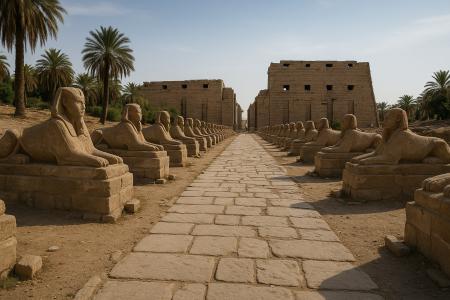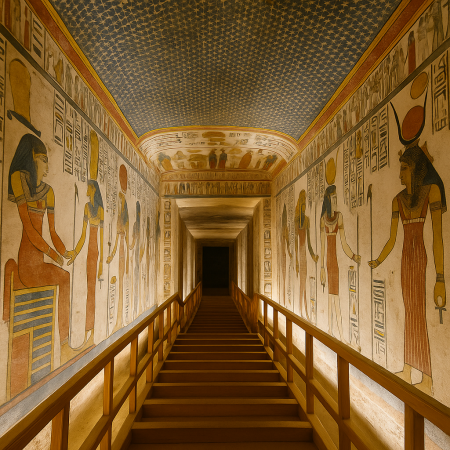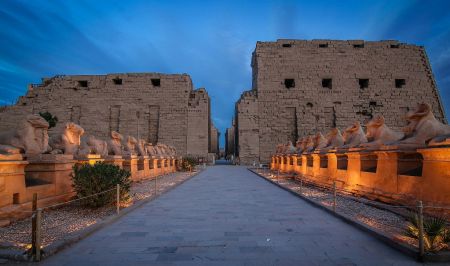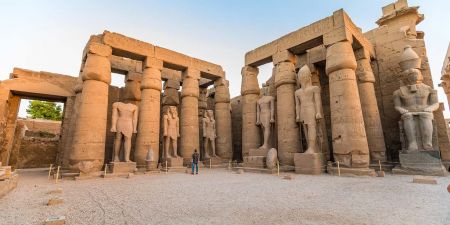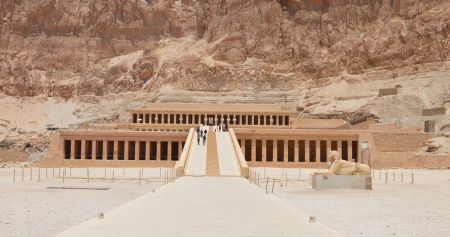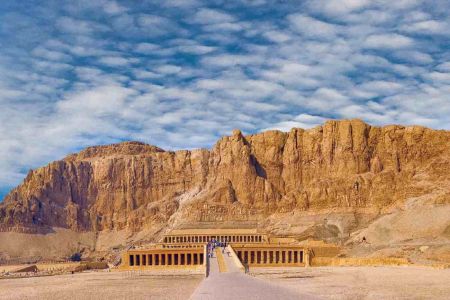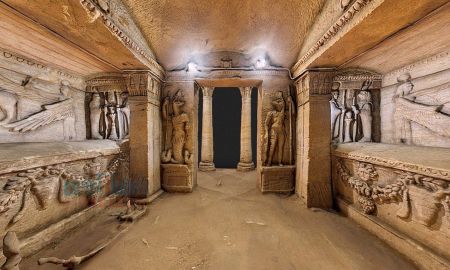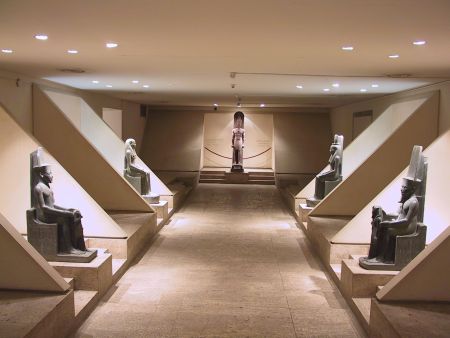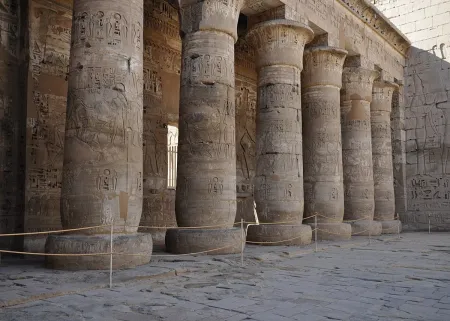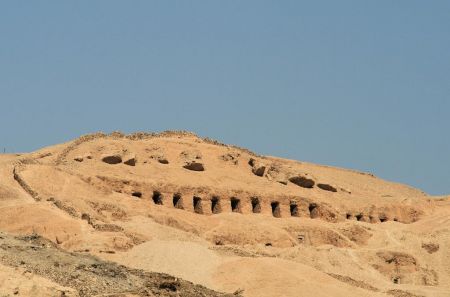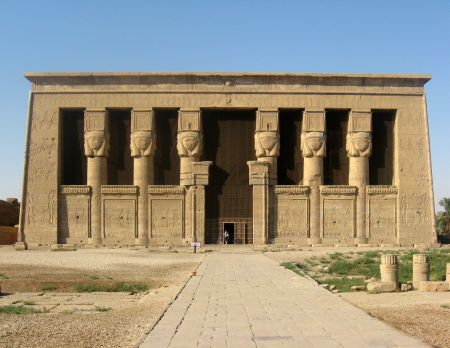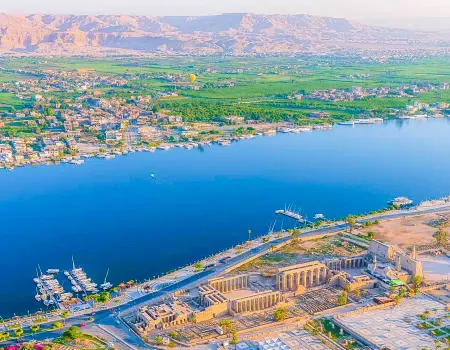The Temple of Seti I: A Journey Through Egypt’s Most Spiritual Monument
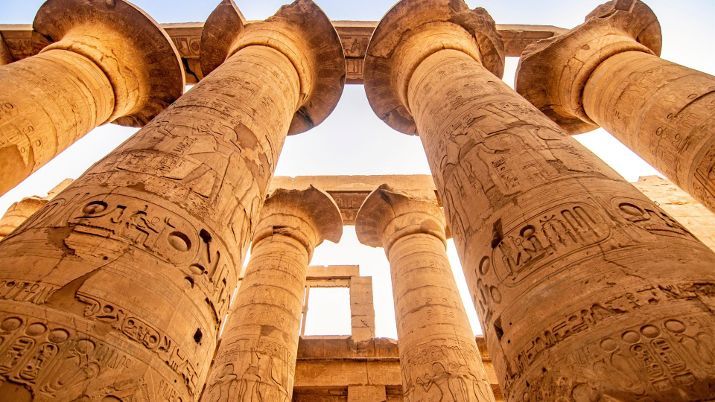
Few places in Egypt carry the same aura of mystery and reverence as The Temple of Seti I in Abydos. This isn’t just another ancient ruin—it’s one of the most spiritually charged sites ever built in ancient Egypt. Every stone, every carving, and every shadow inside its walls tells stories of gods, pharaohs, and eternal life.
When I first stood before the temple’s entrance, I could feel an almost magnetic energy. The soft desert wind brushed against the limestone façade, and as I stepped inside, time seemed to dissolve. What makes this site so unique isn’t only its architectural brilliance but also its purpose—this was a temple of resurrection, built not merely for worship but for rebirth.
Unlike other grand temples such as the Luxor Temple or the sprawling Karnak Temple, the Temple of Seti I has a haunting intimacy. It was built during Egypt’s Nineteenth Dynasty by Pharaoh Seti I and later completed by his son, Ramses II. The temple honors seven major deities—Osiris, Isis, Horus, Amun-Ra, Ra-Horakhty, Ptah, and Seti himself—each represented in dedicated sanctuaries. It’s here that the sacred and the personal intersect, creating a harmony between divine legacy and human devotion.
The Legacy of Pharaoh Seti I – Vision Beyond Power
Seti I wasn’t just another pharaoh chasing grandeur. His vision went deeper. Known for his wisdom, Seti sought to restore Egypt’s dignity after the turbulence of the Amarna period. He didn’t simply want a temple; he wanted a spiritual masterpiece that would stand the test of time.
This temple in Abydos served two purposes—honoring the gods and immortalizing the royal lineage. The famous Abydos King List, carved into its walls, is a meticulous chronological record of Egypt’s kings from Menes to Seti. No wonder historians and Egyptologists often compare the temple’s importance to the Valley of the Kings, where many of these rulers found their eternal rest.
Every detail here reveals Seti’s devotion. From the deep, crisp reliefs to the harmonious symmetry of its halls, this temple embodies perfection. Even after 3,000 years, the carvings retain a level of precision that makes modern architects pause in awe.
Architectural Brilliance – Where Art Meets Eternity
The moment you step into the hypostyle hall, you’re greeted by massive stone pillars adorned with intricate carvings. Unlike the Temple of Hatshepsut, which impresses with its cliff-side geometry, the Temple of Seti I captivates through its intimate elegance.
The temple’s layout follows a unique L-shaped design, diverging from the straight axial plan seen in other major temples like Karnak Temple. This shift symbolizes a transition from the earthly to the divine realm—a journey the ancient Egyptians believed every soul must undertake.
Light filters through small openings, dancing across walls that depict scenes of Seti offering to various gods. The craftsmanship is astonishing; the figures seem almost alive, their eyes glinting in the dim light. It’s no surprise that early explorers called it the “Temple of Beauty.”
The Abydos Mysteries – The Heart of Egyptian Resurrection Beliefs
Abydos wasn’t chosen by chance. It was Egypt’s most sacred city, believed to be the burial place of Osiris, god of the afterlife. Pilgrims from all corners of ancient Egypt traveled here seeking spiritual renewal.
Seti I’s temple was built near the Osireion, a subterranean structure thought to represent the tomb of Osiris himself. Together, these monuments formed the heart of resurrection worship. To the ancient mind, visiting Abydos was akin to touching eternity.
When compared to the Valley of the Kings, where physical bodies were entombed, Abydos represented the metaphysical side of immortality—the rebirth of the soul. The temple thus served as a bridge between the visible and invisible worlds.
Artistic Mastery – Colors, Symbols, and Hidden Messages
Among all surviving temples in Egypt, the Temple of Seti I preserves some of the best reliefs ever carved. The colors, though faded by time, still whisper stories of devotion. Each wall carries symbolic meaning—hieroglyphs woven into divine narratives.
In one remarkable scene, Seti is shown presenting offerings to Osiris while Isis and Horus stand beside him, a sacred family united in purpose. The realism and emotional depth in these carvings surpass even those found in Luxor Temple or Karnak Temple, where grandiosity often overtakes intimacy.
There’s also a curious engraving that’s sparked centuries of debate—the so-called “Abydos Helicopter.” Some claim it depicts futuristic technology, though most scholars agree it’s a palimpsest of overlapping hieroglyphs. Still, it adds an air of mystery that keeps the temple’s legend alive.
The Temple of Seti I vs. Other Great Egyptian Temples
When comparing The Temple of Seti I with iconic structures like the Temple of Hatshepsut, Luxor Temple, or Karnak Temple, what stands out most is emotion. The others showcase power and scale; Seti’s temple reveals devotion and artistry.
At Karnak Temple, you stand beneath colossal columns that reach the heavens. At Luxor Temple, you walk through grand courtyards designed for festivals of the living. But in Abydos, the experience is different—it’s deeply personal. Here, you don’t just see history; you feel it.
The Temple of Seti I invites reflection. It’s not about the spectacle but about the spirit behind it—the eternal conversation between gods and men.
Visiting the Temple of Seti I – Practical Tips and Insider Advice
For travelers exploring Upper Egypt, the journey to Abydos is well worth the time. It’s roughly a three-hour drive north of Luxor, passing through serene desert landscapes and small villages that seem untouched by time.
Plan your visit in the early morning when sunlight gently illuminates the reliefs, revealing their exquisite detail. A knowledgeable guide—preferably one familiar with Egyptology—can help decode the symbolic scenes that line every corridor.
If you’re following a cultural itinerary that includes The Valley of the Kings, Temple of Hatshepsut, and Luxor Temple, adding Abydos completes the spiritual circuit. It ties together Egypt’s narrative of life, death, and resurrection in a way few other destinations can.
The Spiritual Experience – More Than Just a Monument
Standing inside the sanctuary of Osiris, you’ll sense why this place still feels alive. The silence isn’t empty—it hums with reverence. Many travelers describe the experience as almost meditative.
Whether you’re an archaeology enthusiast or a casual visitor, the Temple of Seti I has the power to shift your perspective. It’s a reminder that ancient Egypt wasn’t only about pyramids and power—it was about faith, beauty, and eternal hope.
FAQs About The Temple of Seti I
Q1: Where is the Temple of Seti I located?
It’s situated in Abydos, about 160 km north of Luxor, in Upper Egypt.
Q2: Who built the Temple of Seti I?
It was commissioned by Pharaoh Seti I during Egypt’s Nineteenth Dynasty and later completed by his son, Ramses II.
Q3: What makes the Temple of Seti I unique?
Its exquisite reliefs, the Abydos King List, and its spiritual connection to Osiris distinguish it from all other temples.
Q4: How does the Temple of Seti I compare to the Temple of Hatshepsut?
While Hatshepsut’s temple impresses with architectural scale, Seti’s temple captivates with intimate spiritual depth and artistic perfection.
Q5: Can visitors explore both Abydos and the Valley of the Kings in one day?
It’s possible but demanding; it’s best to split the visit across two days for a more immersive experience.
Q6: What’s the best time to visit Abydos?
From October to April, when temperatures are mild and light conditions are ideal for photography.
Q7: Is the Abydos Helicopter real evidence of ancient technology?
No—scholars explain it as a result of overlapping hieroglyphs. However, it remains one of the temple’s most fascinating features.
Q8: Why is Abydos considered sacred?
It was believed to be the burial place of Osiris, making it the spiritual heart of resurrection worship in ancient Egypt.
The Temple of Seti I is more than an archaeological site—it’s a timeless testament to devotion, art, and eternal life. Whether you’re tracing the footsteps of pharaohs in the Valley of the Kings, admiring the grandeur of Karnak Temple, or marveling at the beauty of the Temple of Hatshepsut, don’t miss Abydos. It’s here, in the temple of Seti I, that the story of ancient Egypt truly comes alive.


